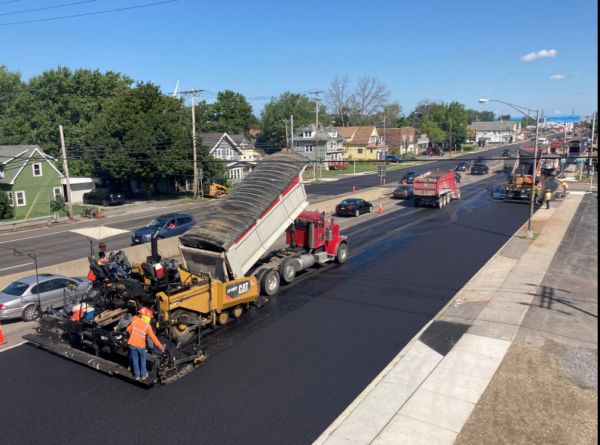A report from the Construction Industry Council of Westchester & Hudson Valley (CIC) shows that infrastructure spending by municipalities remained fairly stable during the 10 years from 2010 to 2020 but spending on roads dropped 16% from $420 million in 2019 to $351 million in 2020. Total infrastructure spending from 2010 to 2020 showed an average annual increase of 1.1% for roads, bridges, sewers and water until adjustments were made for inflation. Once that was done and figures were expressed as 2020 dollars, the amount spent on infrastructure in 2020 of $766 million was actually lower than what had been spent in 2010 ”” $818 million.
CIC commissioned the “Hudson Valley Infrastructure Gap” study, which was carried out by the organization Hudson Valley Pattern for Progress. For purposes of the study, the Hudson Valley was defined as consisting of Westchester, Putnam, Dutchess, Columbia, Rockland, Orange, Ulster, Sullivan and Greene counties.

“The impact of inflation is particularly evident from 2015 to 2018,” the report said. “Over this three-year time period, infrastructure spending increased every year for an average annual increase of 1.6%. However, after adjusting for inflation, this trend is reversed and shows an average annual decrease in infrastructure spending of 0.5% per year. This means that over this time period the rate of inflation outpaced increases in infrastructure spending.”
The report determined that municipalities have been having trouble finding qualified employees for jobs that deal with infrastructure such as in public works departments. It found no single reason for the problem but suggested that early retirements and people moving out of the region contributed to the issue. The report also noted that some municipalities have been hiring recent graduates and providing on-the-job training but the graduates soon leave for jobs in the private sector.
“This is not without risk as these recent hires may use the municipality to get a foot in the door, and then leave for a better paying job after the municipality has spent the time and resources to train them,” the report said.
The report found that some money available for infrastructure improvements has gone unspent because municipalities have had difficulty applying for state or federal grants.
“Paperwork and other administrative demands are typical of virtually all grant funding, and project oversight is a necessary component,” the report said. “However, the interviews conducted in this study provided overwhelming input that many of the state and federal sources for infrastructure funding are overly burdensome. In fact, the complexities and ‘red tape’ associated with state and federal funding has caused instances where municipalities decide not to apply for needed infrastructure dollars.”
The report found that an estimated $671 million is needed for municipal bridge improvements, and $1.8 billion is needed for county bridge improvements in the Hudson Valley. These figures do not include improvements to bridges maintained by the state and other agencies. The report says that less than half of the money that is needed has been awarded to municipalities since the state’s Bridge-NY program was founded as the primary source for financial assistance with work on bridges.
When it comes to money for sewer and water projects, the report cited a finding by the New York State Comptroller that less than 11% of $3.9 billion that had been appropriated had been spent as of March 2020.





















